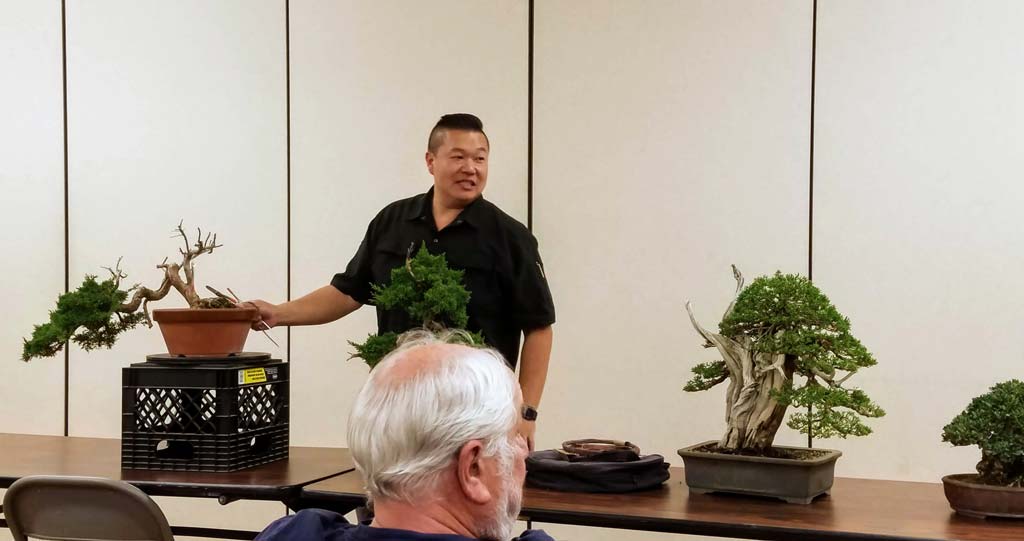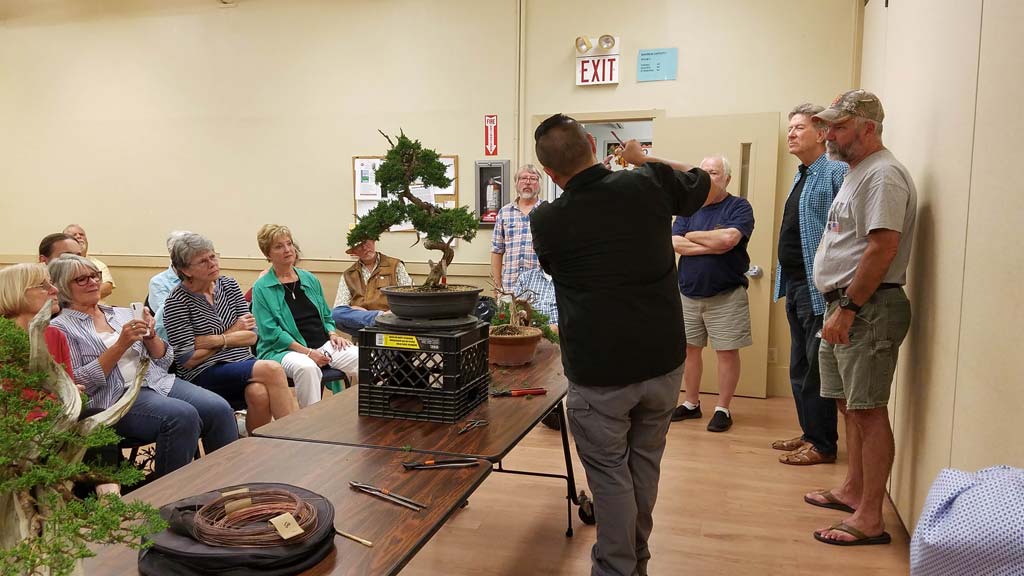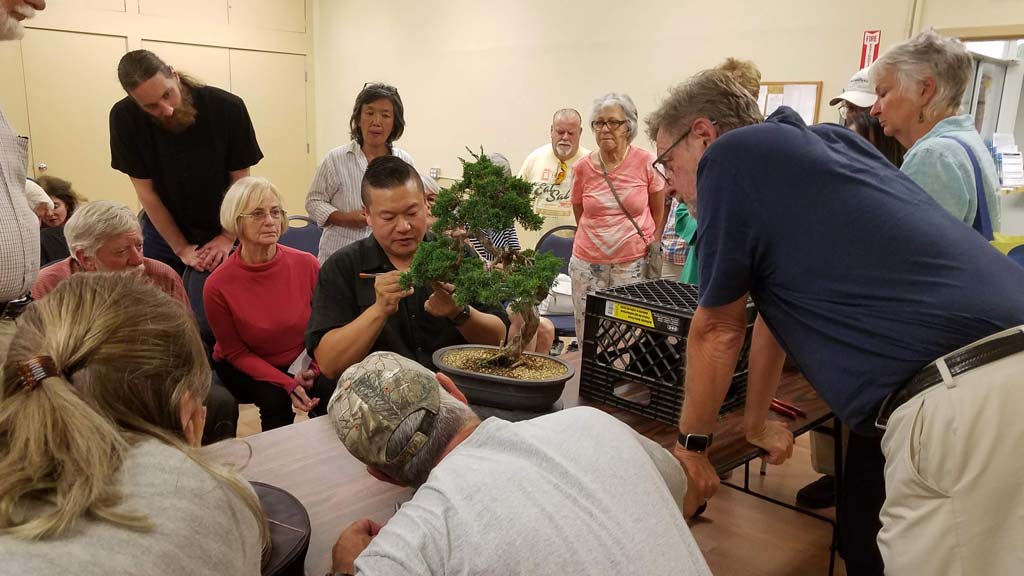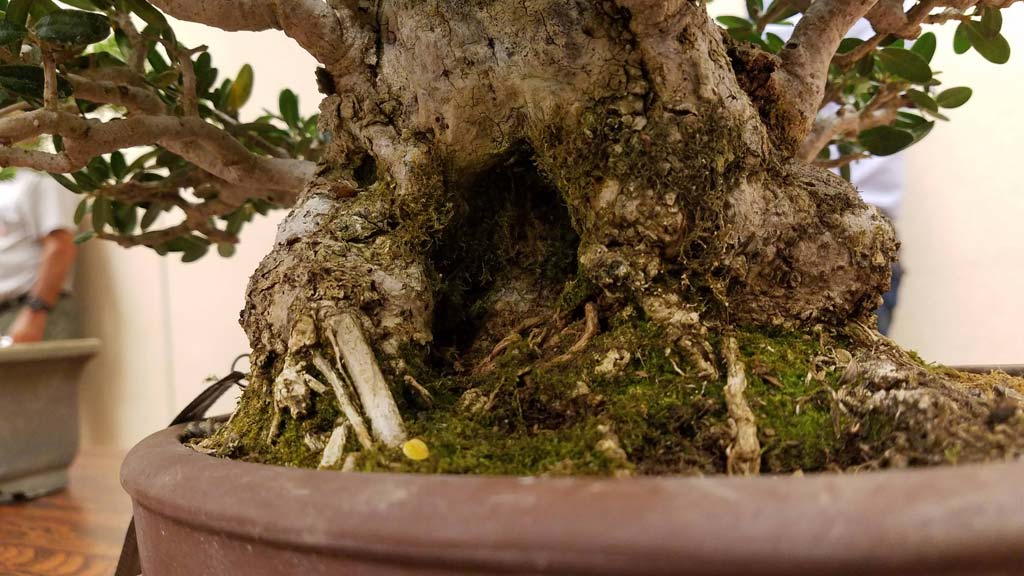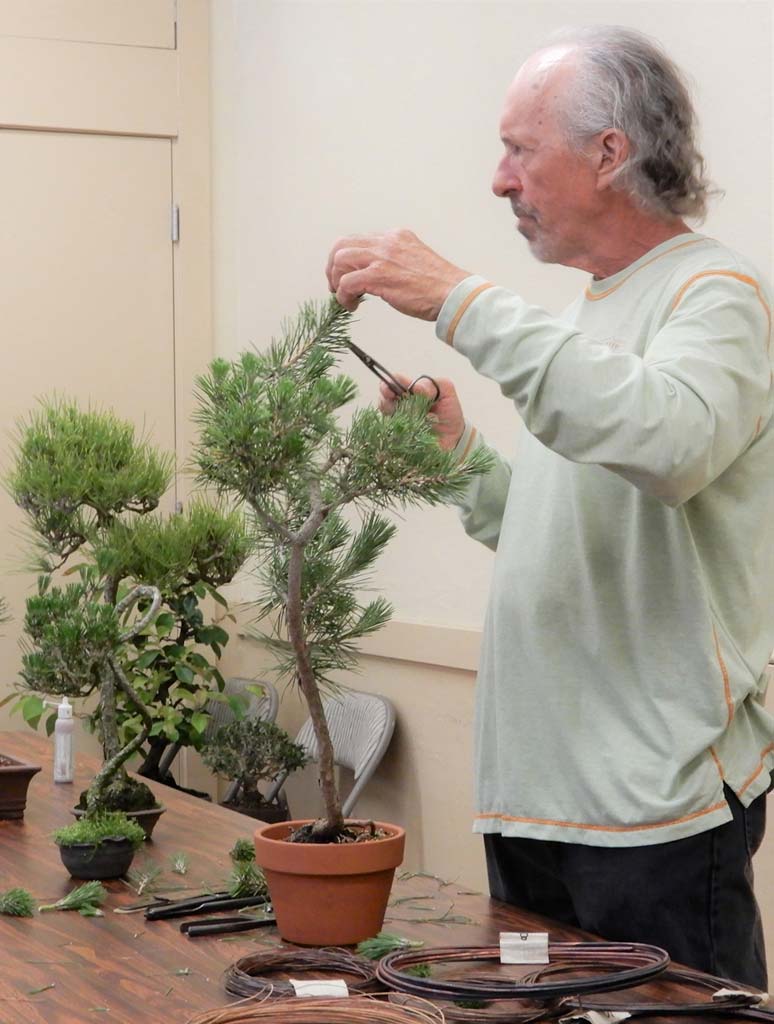On July 16 and 23, at the Terra Linda Community Center, San Rafael, California, Marin Bonsai Club (MBC) conducted its annual beginners’ workshops. This year there were two workshops, one with 10 students and the other with 11 students, all learning the living art form referred to as bonsai. Each student worked with a senior member of MBC on creating a bonsai from nursery stock. The trees were Prostrada junipers, roughly five years old and having been repotted by the Calaveras Nursery, Inc., located in Sunol, California. The junipers were repotted in five-gallon nursery containers about two and a half years ago and had well developed root systems.
The workshops were laid out in five tables with two and
three students per table. A senior MBC member/instructor was assigned to each
table. Many thanks to John Doig, Janice Dilbert, Dan Keller, Alan Voight,
Michael Murtaugh, Chris Ross, and George Haas for volunteering their time and
experience in teaching the workshops.
Beginners’ Workshop #1
John prepared the junipers in advance of the workshops by
cutting the root ball in half, reducing the size of the nursery containers and
wiring to secure the trees in the container. He also exposed the nebari by
scraping away some of the surface soil from around the trunk base. This
preparation saved a lot of time and avoided the mess of the students dealing
with the same. It allowed for the instructor to begin the teaching of bonsai
creation.
Prostrada juniper (Juniperus horizontalis) has a
low horizontal growth pattern. The plant is used in landscapes. The numerous
branches provide extreme movement and is quite suitable for bonsai.
Instructions basically started with cleaning the branches
of unwanted foliage; dead foliage, downward growth, crotches. Once the heavy
foliage was removed, unwanted branches were removed entirely or made into jin
(deadwood) features. Some proceeded to select a front view, while others
delayed identifying the front view and continued to work on structural and
primary branches.
Students had input into the bonsai design with some
choosing cascade or informal upright styles. John brought two Prostrada juniper
demonstration trees to aid the students in their creations. These were junipers
that were created by John and Chris during demonstrations conducted in
conjunction with the Marin County Fair earlier in the month.
Beginners’ Workshop #2
MBC provided aluminum wire for the workshops. Wiring was
a critical part of creating the student’s bonsai. The instructors demonstrated
the application of aluminum wire on the trunk and primary and secondary
branches. The students then followed by wrapping the wire around the branches.
The students expressed great enthusiasm and enjoyment in their creations of bonsai. A number of them showed interest in joining the club. In fact, there were several students who joined MBC during the workshops. All of the students were invited to join MBC’s winter repotting workshops in 2020.
– George Haas





